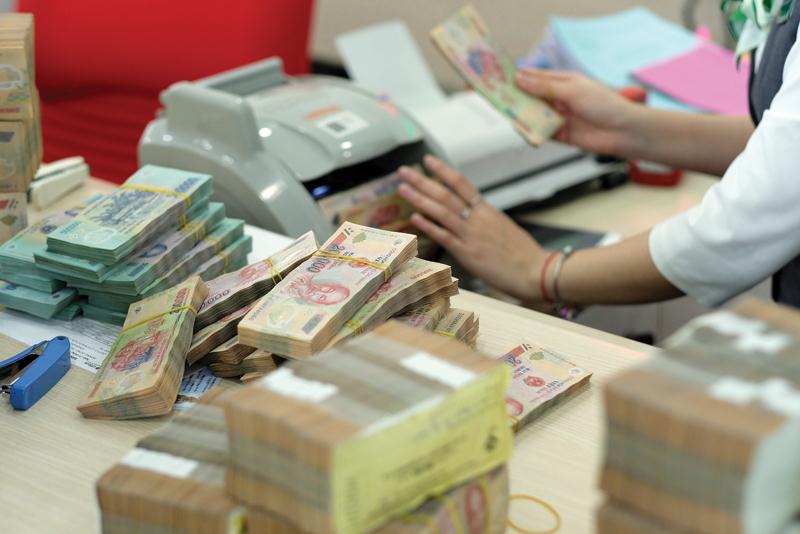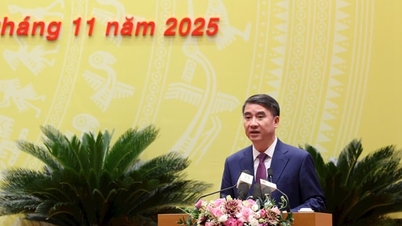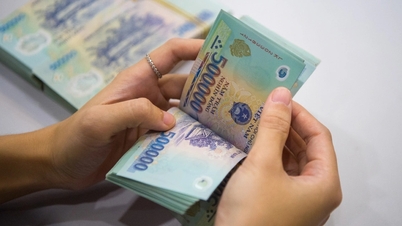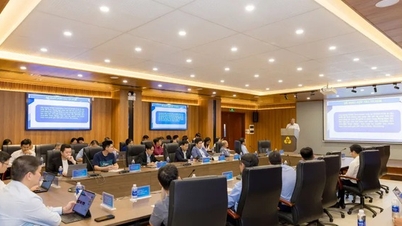 |
| Vietnam is among the countries with the highest credit/GDP ratio in the world . |
Removing credit "room": Necessary but must be cautious
At the recent Government Conference with localities on socio -economic development, Prime Minister Pham Minh Chinh requested the State Bank to soon abandon administrative tools in managing credit growth, and instead follow market principles.
The credit quota mechanism (credit room) has been applied by the State Bank since 2012, as a tool for this agency to control loan quality as well as serve other macroeconomic targets such as interest rates, money supply and inflation.
According to the State Bank, in reality, credit management according to growth limits has contributed significantly to promoting sustainable economic growth, controlling inflation and stabilizing the banking system. Over the past time, the State Bank has also gradually adjusted and improved credit management methods to approach market standards. By the beginning of this year, this limit was only applied to commercial banks, while foreign bank branches and non-credit organizations were "unleashed".
Associate Professor Dr. Nguyen Thi Mui - Member of the National Monetary Policy Advisory Council, said that removing the credit limit is a necessary step to 'raise market value', but this roadmap needs to be implemented very carefully, with full assessment and accompanying monitoring tools.
Because when the room is removed, commercial banks will have full autonomy in their credit growth plans, according to their own business strategies. At the same time, the credit market will operate according to the law of supply and demand. Lessons from the economic crisis of more than a decade ago are still valid. After 13 years, the situation has changed a lot, but the echoes of the previous period still prevent some commercial banks from meeting international governance standards.
Accordingly, this expert believes that, in the roadmap to remove "room", if certain credit growth levels are still applied, priority should be given to banks with high safety ratios, good governance, strict compliance with regulations and effective operations.
Sharing with the Electronic Investment Newspaper - baodautu.vn - recently, Prof. Dr. Tran Ngoc Tho, Ho Chi Minh City University of Economics, expressed his opinion that instead of completely eliminating the room or continuing to tighten it, we can raise the question: How to manage credit in a market-oriented manner, but still maintain financial discipline and public policy goals?
From international experience, this expert believes that it is possible to outline a set of conditional transmission mechanisms, with three pillars including: conditional room, capital flow deviation index from policy target, and 'colored' credit system.
"If the room is removed without a commitment to transparency, who will monitor that transparency and will the market have difficulty recognizing the changes, while expectations have become numb due to old habits," Professor Tran Ngoc Tho raised the issue.
The balancing act for growth
At a press conference to announce the banking performance in the first half of 2025, Deputy Governor Pham Thanh Ha also said that as of June 30, credit in the entire economy had reached over VND17.2 trillion, up 9.9% over the end of last year. According to Director of the Monetary Policy Department Pham Chi Quang, this increase is the highest since 2022 and 2.5 times higher than credit growth in the first half of 2024.
Credit continues to be the main pillar of capital flow for the economy, but at the same time leaves a problem for management.
At the National Assembly's mid-June question-and-answer session, Governor Nguyen Thi Hong warned about the credit/GDP ratio at 134% - a record high, and also showed that bank credit is currently "burdening" a very heavy part of the capital structure of the economy. From production investment, consumption to large infrastructure projects, medium and long-term capital is pouring into the bank credit channel. In developed countries, banks only play a key role in providing short-term capital for the economy. With the demand for medium and long-term capital, businesses must mobilize through the capital market.
 Box: Mr. Phan Linh - CEO of TechProfit Joint Stock Company:
Box: Mr. Phan Linh - CEO of TechProfit Joint Stock Company:Removing the credit room is the right trend, but it must be accompanied by strong governance and supervision. Otherwise, the risk of returning to the hot credit period is entirely possible. If the room is removed without alternative control tools, banks will compete to lend to maximize profits, capital will easily flow into risky areas such as real estate and securities. At that time, inflationary pressure and exchange rates may return, and asset bubbles can easily form. This is very worrying in the context that many banks still do not fully meet international governance standards such as Basel II and Basel III.

The record high credit/GDP ratio in our country is not just a technical figure but a sign of a growth model that depends on capital injection rather than improving efficiency. In recent years, to be able to bring about 1 percentage point of economic growth (GDP), it will take an average of more than 2 percentage points of credit growth. For example, in 2023, GDP growth of nearly 7%, credit growth will be at 14.55%. In 2024, GDP growth of 7.09%, credit growth will be 15.08%.
The head of the banking industry also pointed out that Vietnam's ICOR index - reflecting the efficiency of capital use - is still higher than many other countries, showing that although there is a lot of investment, the efficiency is not commensurate.
According to Director of the Monetary Policy Department Pham Chi Quang, the solution to manage overall credit growth at this time will need to be harmonious and suitable to the characteristics of the Vietnamese economy, in order to increase autonomy for credit institutions but also ensure system safety, economic security, and inflation control.
The lessons from the 2008-2010 period, in fact, are still valid. When the economy faced the global financial crisis, Vietnam implemented many credit easing packages to maintain growth momentum. But the result was a cycle of inflation, exchange rate instability, asset bubbles and bad debt that lasted for many years afterward.
Source: https://baodautu.vn/tin-dung-ngan-hang-va-bai-toan-can-bang-rui-ro---tang-truong-d327171.html







![[Photo] Dan Mountain Ginseng, a precious gift from nature to Kinh Bac land](/_next/image?url=https%3A%2F%2Fvphoto.vietnam.vn%2Fthumb%2F1200x675%2Fvietnam%2Fresource%2FIMAGE%2F2025%2F11%2F30%2F1764493588163_ndo_br_anh-longform-jpg.webp&w=3840&q=75)




































































































Comment (0)